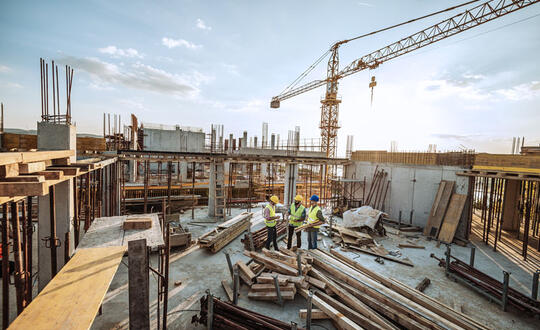
Whilst substantial parts of the Building Safety Act 2022 (BSA) apply to all buildings, there are important enhanced obligations that apply to Higher-Risk Buildings (HRBs). So understanding whether you have an HRB or not is crucial.
To work this out, you'll need to look at the Higher-Risk Buildings (Descriptions and Supplementary Provisions) Regulations 2023 (Regulations) as further explained by the guidance recently issued by the Government dealing with the criteria for being an HRB during the occupation phase of the higher-risk regime (Guidance).
It's complex though, so we've summarised it for you.
First, do you have a building?
This may seem like a pretty obvious question – but it has to be asked, because the Regulations set out what a "building" is.
The definition of "building" in the construction phase is deliberately broad to allow the Building Safety Regulator to have a wide remit. "Building" therefore includes a single structure plus a number of structures if they are attached.
During the in-occupation phase, however, the definition is more nuanced, drawing a distinction between parts of complex structures which can be classified as HRBs and parts which are not. The intention here was to narrow the definition of HRBs for the in-occupation phase.
This is a complex exercise which requires the Regulations and the Guidance to be studied carefully.
It is important for you to understand next whether a building you are responsible for is an HRB.
HRB or not HRB, that is the question
In very simplified terms, the Regulations say that HRBs are buildings that are 18m or seven storeys high or more, and have two or more residential units. Details of how the height is measured and what is and is not included as part of this measurement can be found in the Regulations and the Guidance.
In the design and construction phase, hospitals and care homes are included in the definition of HRB (if they meet the other criteria for HRBs, mentioned above).
In the in-occupation phase, however, buildings that are solely hospitals and care homes are excluded because they are regulated as workplaces through the Regulatory Reform (Fire Safety) Order 2005 (Order) instead.
If your building is comprised entirely of a hotel or a secure residential institution (like a prison), then it is excluded from the definition of HRB too, as they are also regulated by the Order.
If the building is comprised entirely of a military barracks or contains living accommodation for military personnel, it is not caught either, being subject to its own specific fire safety requirements instead.
The Guidance provides more detail on other types of accommodation (such as sheltered accommodation and university residences) which may also be HRBs.
You should bear in mind that in practice, though, developments are complex - buildings can be mixed-use (such as a combination a commercial and residential) and may be joined by sections and structures (like walkways and basements) which could bring them within the definition of HRBs despite the exclusions mentioned above.
Why it matters?
As mentioned above, there are extra obligations for HRBs.
As from April 2023, HRBs must be registered with the Building Safety Regulator before 1 October 2023 (more on this here). The HSE has warned that owners and managers failing to register in time "will be investigated and may face prosecution".
From October, it's anticipated there will also be new obligations in force for new HRBs being built, under the Gateway regime (more here).
And many more changes are also coming, including around information you must have about your HRB (in the Golden Thread). To keep on top of developments, visit our Building Safety Hub or get in touch.
This article is for general information only and reflects the position at the date of publication. It does not constitute legal advice.





